Forum Replies Created
-
AuthorPosts
-
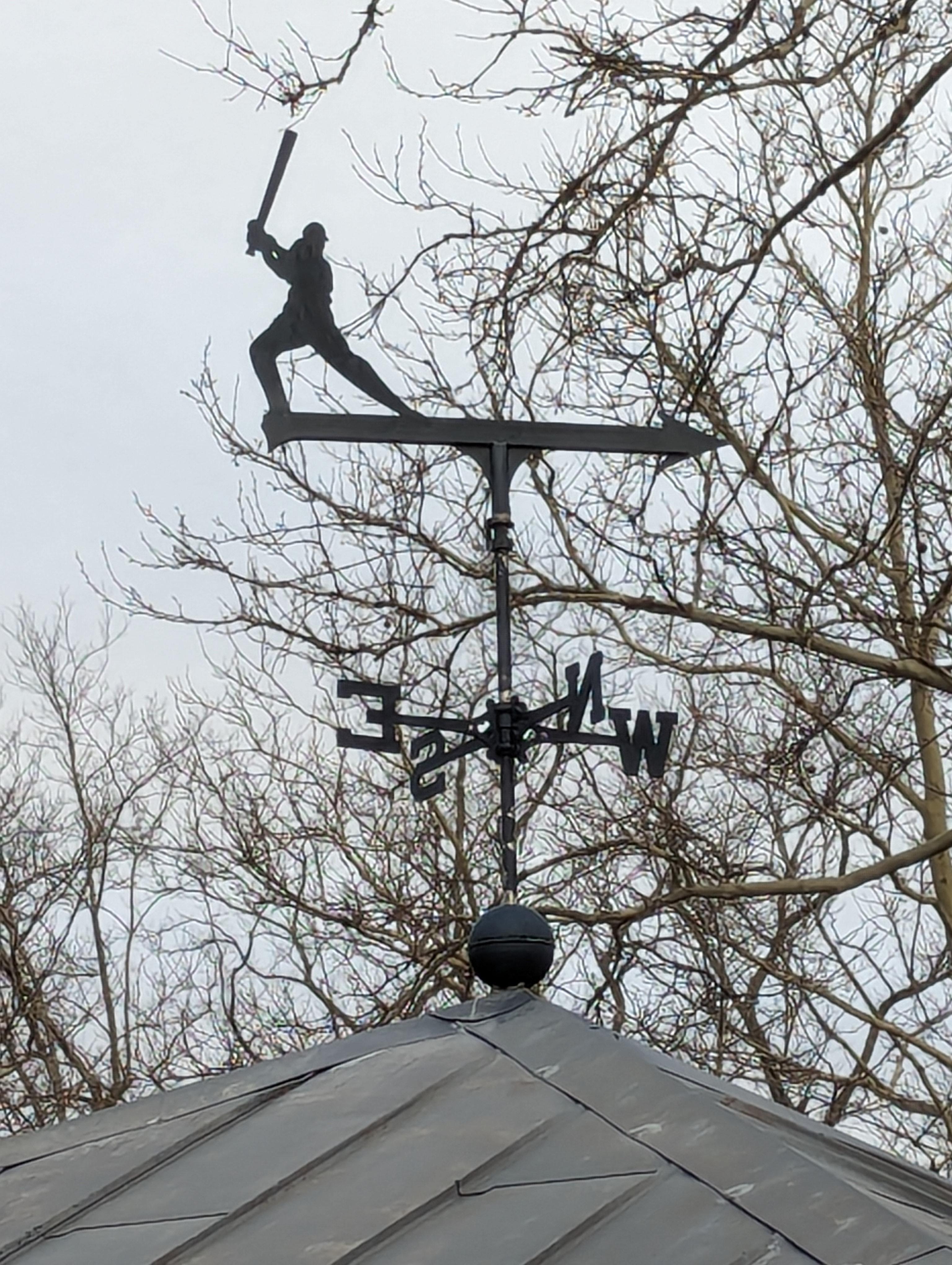
And who knew there was so much early “Base Ball” played in our area? Thanks so much Thomas Casey, you’re way ahead of me!
I’d love to locate the field where the “Uncas” played. BTW: the inspiration for this “poking around” was Nick’s presentation on Thursday in which the “Uncas River” was referenced.
The Presentation was a rousing success, as d very inspiring!
Here are some resources from a website created by extended family member Carla Paterno-Cappiello Golden: https://marabella.family/anthony-campagna-architecture/
Some of the links were dead, I included the ones that were not.
Anthony Campagna architecture outside of Manhattan:
Anthony Campagna – residence/estate
– 640 West 249th Street designed by Dwight James Baum 1929-30 Bronx
– Riverdale-on-Hudson, New York City
For his Riverdale residence, Mr. Campagna chose the Aeolian Company to furnish a pipe organ. As was standard for Aeolian residence organs, the instrument could be played three ways: in the traditional manner from a three-manual console; entirely automatically by the Duo-Art Player; or semi-automatically by the Solo Player. The Aeolian Company Specification (Aug. 30, 1929) and Contract states that the organ would be built for a consideration of $21,000, and installed on or about March 15, 1930. The fate of this organ is unknown. Anthony Campagna Residence 640 249th Street Riverdale (The Bronx), N.Y. 10471 The New York City Chapter of the American Guild of Organists (photos of home and organ: https://www.nycago.org/Organs/Brx/html/ResCampagnaA.htmlCampagna and his wife lived in the Riverdale section of the Bronx, where Campagna purchased land from Percy Rivington Pyne and built the now landmark palatial residence at 640 West 249th Street. The home, modeled after an Italian villa, was built in 1929 to 1930 and was designed by architect Dwight James Baum and landscape architect Ferruccio Vitale and his partner, Alfred Geiffert, Jr., who won the 1934 gold medal in landscape architecture from the Architectural League of New York for the property. As of 2011, the building was owned by Yeshiva of Telshe Alumni.
some believe the estate to have been featured in the motion picture The Godfather. Today, it is a dormitory for the Yeshiva of Telshe Alumni.
This building has been designated a landmark:
640 West 249th Street
Construction Date: 1929 – 1930 Architect / Builder: Dwight James Baum Owner / Developer: Anthony Campagna Major Alteration(s): None Alteration Architect(s): None Style(s): Italian Renaissance Revival Material(s): Rusticated Limestone, Stucco, Stone, Spanish Tiles, Iron Building Type: Freestanding House Original Use: Residential, single family Tax Block: 5914 Tax Lot: 315 , Iron The formal landscape was designed by Ferruccio Vitale and Alfred Geiffert, Jr. and based on Italian prototypes All building data and notes from the Anthony Campagna Estate designation report and in some cases supplemented by the LPC’s Guide to New York City Landmarks (2009).
New York Times June 14, 1929, Section B, Page 46
W H(D) [**]Campagna House (Fig. 24), 640 West 249th Street 21(192925; Dwight James Baum, Architect) Originally constructed as a residence for Count Anthony Campagna, a wealthy Manhattan builder of the 1920s, this imposing building is situated on a rise overlooking the Wave Hill estate, at the corner of West 249th Street and Independence Avenue. A cobblestone drive from the entry gate forms a main axis perpendicular with the front facade, opening at the front entrance into a forecourt with a central fountain. The main entry is framed by a portico of three round arches.600 West 249th Street. Located just to the east of the Campagna House , this residence appears to be of approximately the same period as that designated landmark. The rear portion of this residence and two residences located just behind it appear to be former outbuildings, including a pool house and garage, of the Campagna House.
Home appliance manufacturer Monitor Equipment Company had bought the Campagna mansion in the Riverdale section of the Bronx as its research headquarters. The 35-room Italian Renaissance style building stood on a two-acre hilltop estate overlooking the Hudson River, across from Wave Hill, now a public park. It had been built between 1928 and 1930 by Anthony Campagna for his own use. The Italian-born builder was an in law of the Paterno family and like them had made a fortune constructing high-rise apartments in Manhattan during the 1920s. The Times noted that his former home was one of many great residences “deemed to have outlived usefulness as a private home because of its size and the consequent expense of upkeep.” Throughout the metropolitan area, particularly in the nearby suburbs, similar residences were being converted to house research facilities, institutes and foundations. Riverdale had become an enclave of the city’s elite, between the wars, a suburban neighborhood within the city limits. Other Real Estate News in the Sunday Times: https://nyapril1946.blogspot.com/search?q=paterno
“In the last 50 years, there has been a growing Jewish community in the neighborhood. Its three Jewish schools, the Kinneret Day School, the Yeshiva of Telshe Alumni High School (across from Wave Hill in the former Campagna estate) and the SAR Academy are among the top Jewish schools in the country, according to Rabbi Jonathan Rosenblatt of the Riverdale Jewish Center.” If You’re Thinking of Living In/Riverdale, the Bronx; A Community Jealous of Its Open Space By Margaret Garb March 1, 1998
The Campagna Estate remains the home for the Yeshiva of Telshe Alumni High School to this day.
https://en.wikipedia.org/wiki/Anthony_Campagna
Here is an article on the landmarking of this gem: https://timesmachine.nytimes.com/timesmachine/1994/01/16/859796.html?pageNumber=218
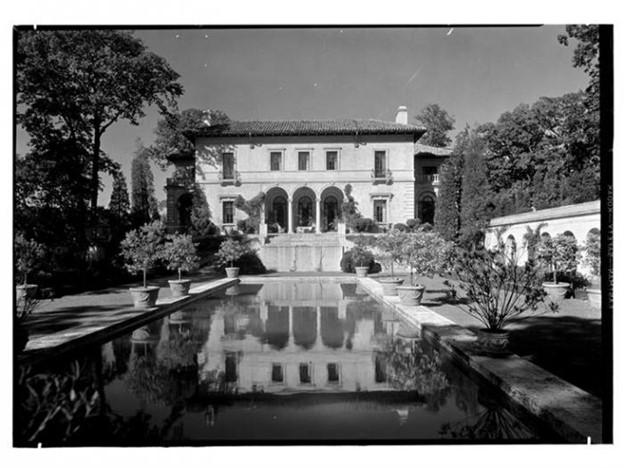
Thanks Julie. Appreciate your contribution
December 20, 2023 at 2:04 am in reply to: Researching Your House Workshop – Yonkers Public Library – January 28, 2024 #3827For more information a d to register:
Researching Your Family House
Date: Sun, Jan 28 2024 • 2:00 PM EST
Location: 1500 Central Park Avenue, Yonkers, NY 10708
https://www.eventbrite.com/e/researching-your-family-house-tickets-776588516157?aff=ebdsshother
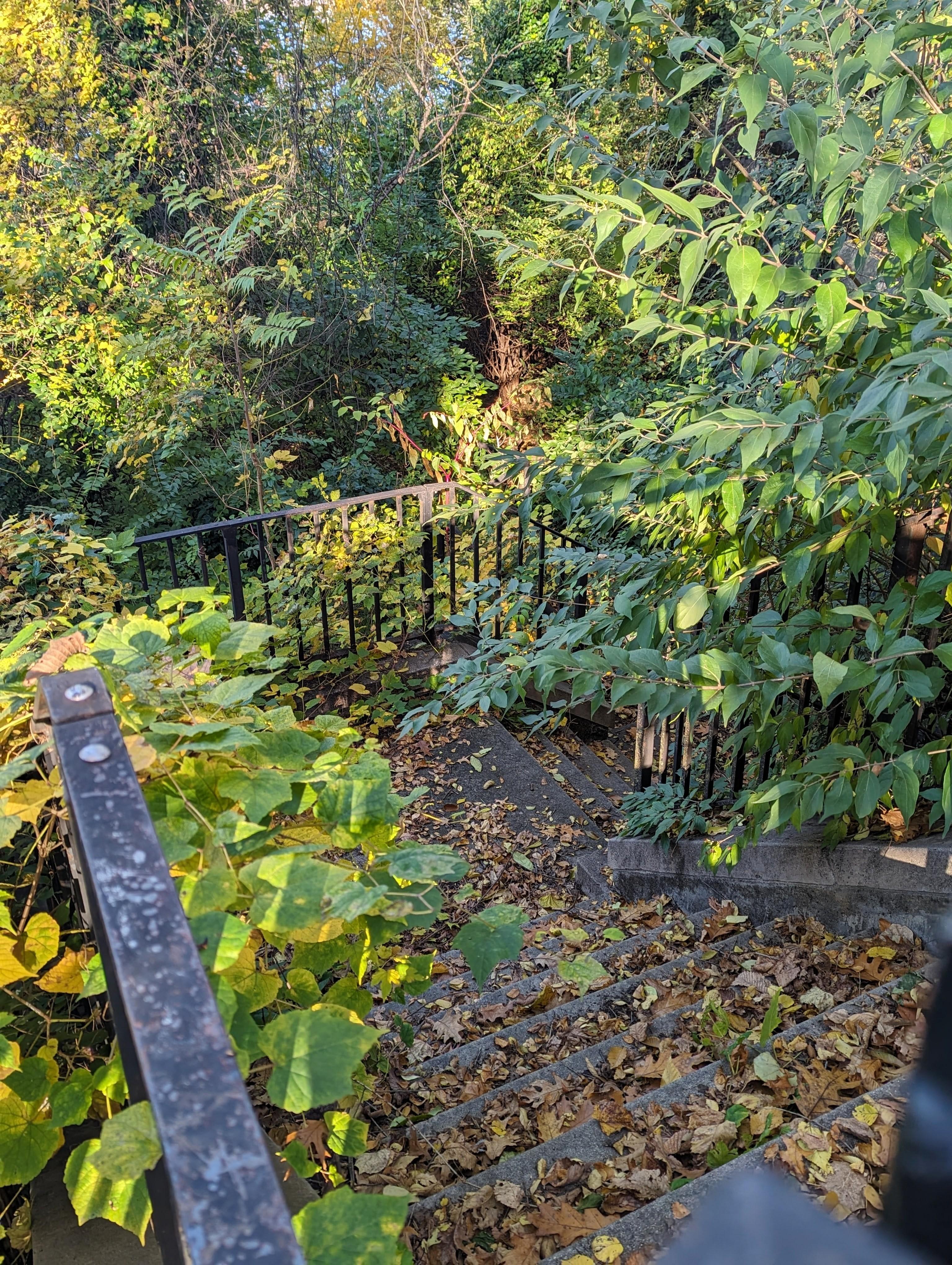
Very few residents of Spuyten Duyvil know that Boss Tweed was a resident of Spuyten Duyvil, and that the ashes of his home are located right below this scenic view. Here’s a Riverdale Press article. Unfortunately I couldn’t find the second page on fultonhistory.com. So many fires occur around holidays (like that sad one that happened today on W. 231st Street); this one on Dec. 17, 1959
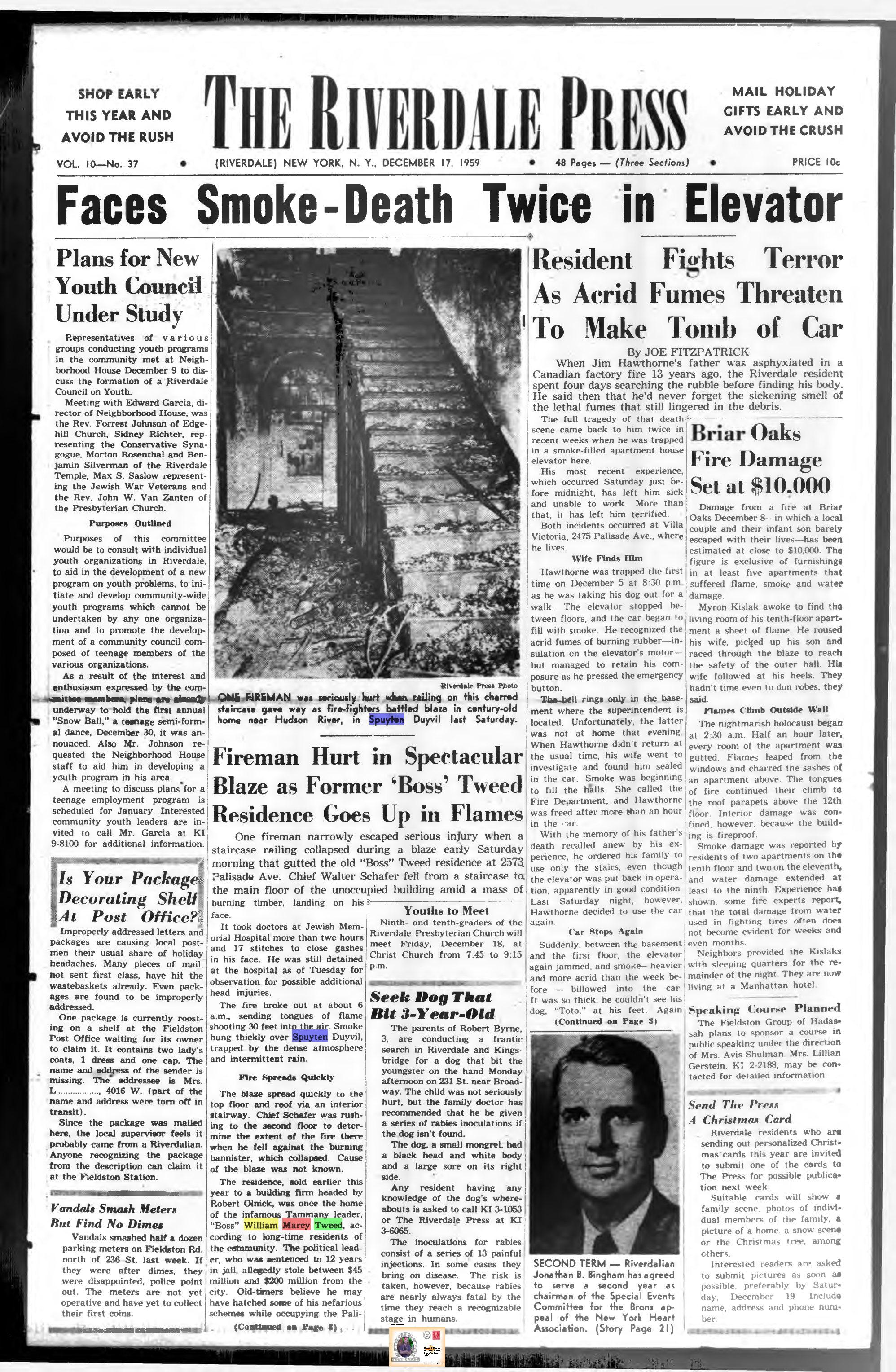
Many of you may remember Tom Bird bringing up this topic at the First Member Meeting. I’ve been doing some research on Spuyten Duyvil Shorefront Park, and its early “people power” origins and I came up with a whole slew of articles on Tween Hill which could have been a high rise apartment building instead of a Forever Wild Park Sanctuary, as part of Shorefront Park. I believe that this may be the location of the Half Moon Overlook.
It might be a lot marker for the Douglas Estate, as it not far from the Raoul Wallenberg Forest where the Douglas House once stood.
October 8, 2023 at 11:25 am in reply to: Indian Pokeweed – the Ink of the Revolutionary and Civil Wars #3720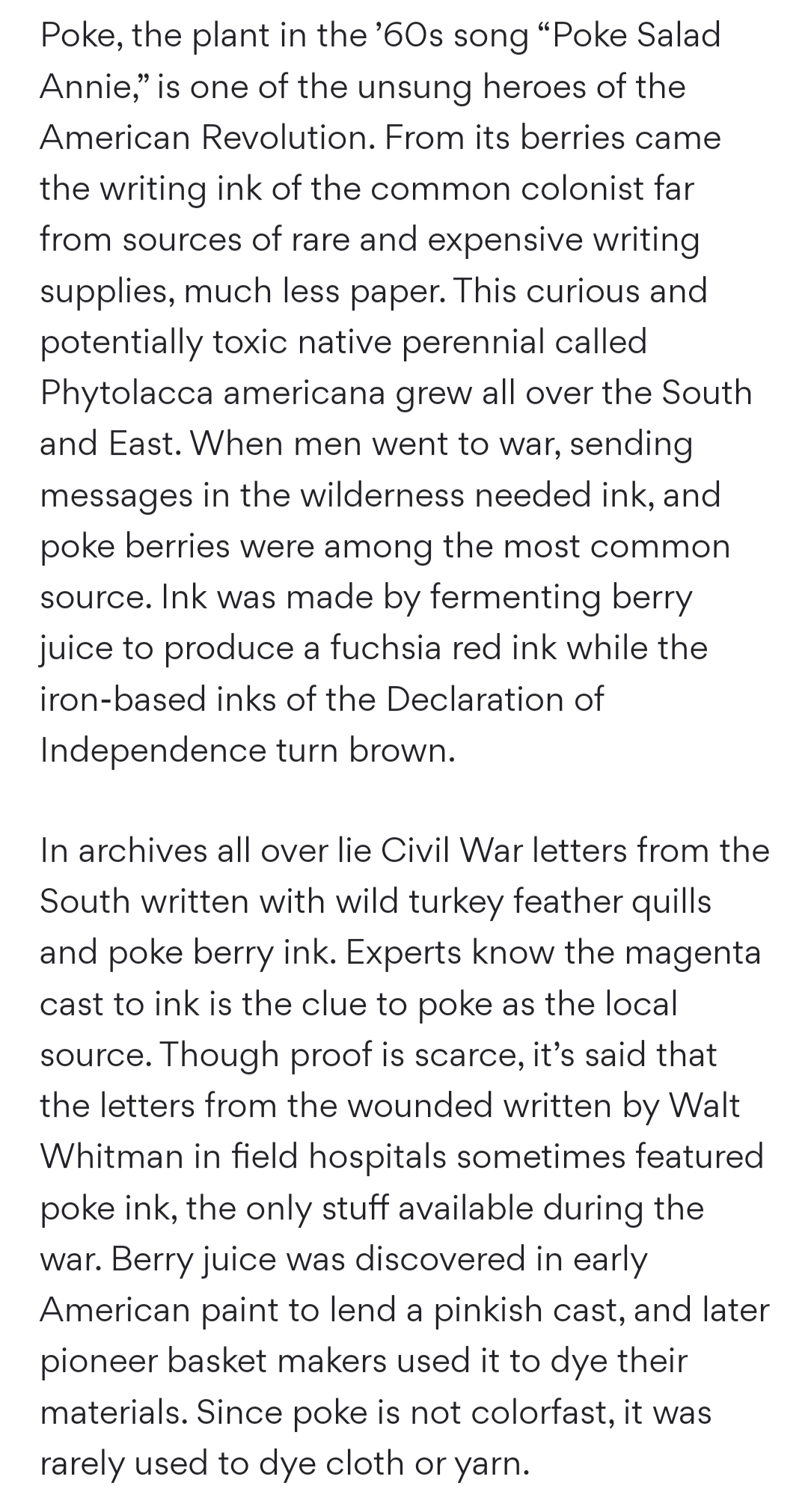 October 8, 2023 at 11:23 am in reply to: Indian Pokeweed – the Ink of the Revolutionary and Civil Wars #3719
October 8, 2023 at 11:23 am in reply to: Indian Pokeweed – the Ink of the Revolutionary and Civil Wars #3719The link above does not seem to want to work so I created two screenshots of the article
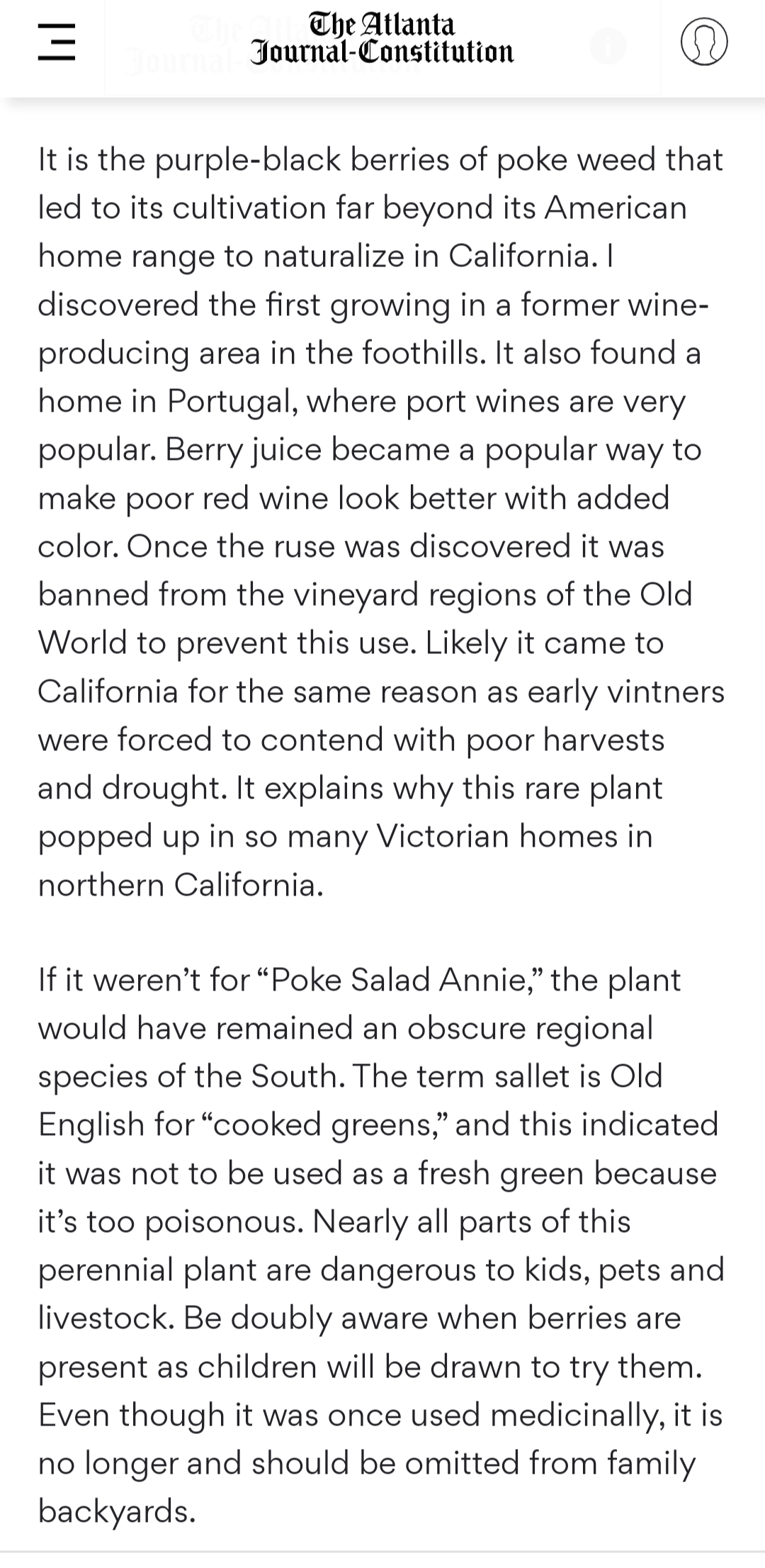 October 8, 2023 at 11:11 am in reply to: Indian Pokeweed – the Ink of the Revolutionary and Civil Wars #3718October 8, 2023 at 11:10 am in reply to: Indian Pokeweed – the Ink of the Revolutionary and Civil Wars #3717
October 8, 2023 at 11:11 am in reply to: Indian Pokeweed – the Ink of the Revolutionary and Civil Wars #3718October 8, 2023 at 11:10 am in reply to: Indian Pokeweed – the Ink of the Revolutionary and Civil Wars #3717One of our newest members, Virginia Arnold, is a naturalist. She clued me into the fact that Indian Pokeweed, which grows all over our community, and in the South and East, was used by Revolutionary and Civil War soldiers to write letters home to their loved ones.
I think the shell I show here is a clam shell, as is the one I found in Henry Hudson Park, if that’s at all important.
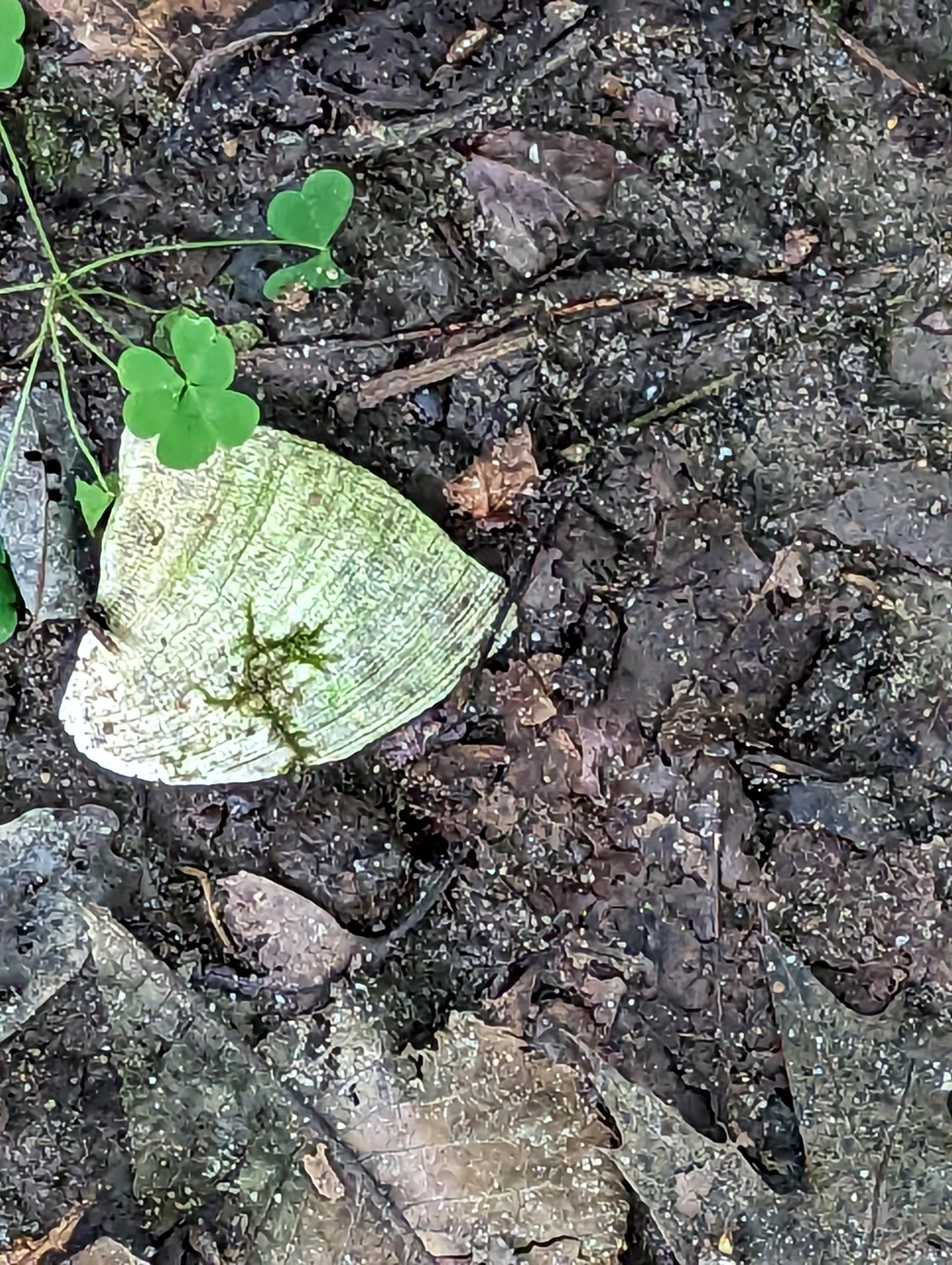
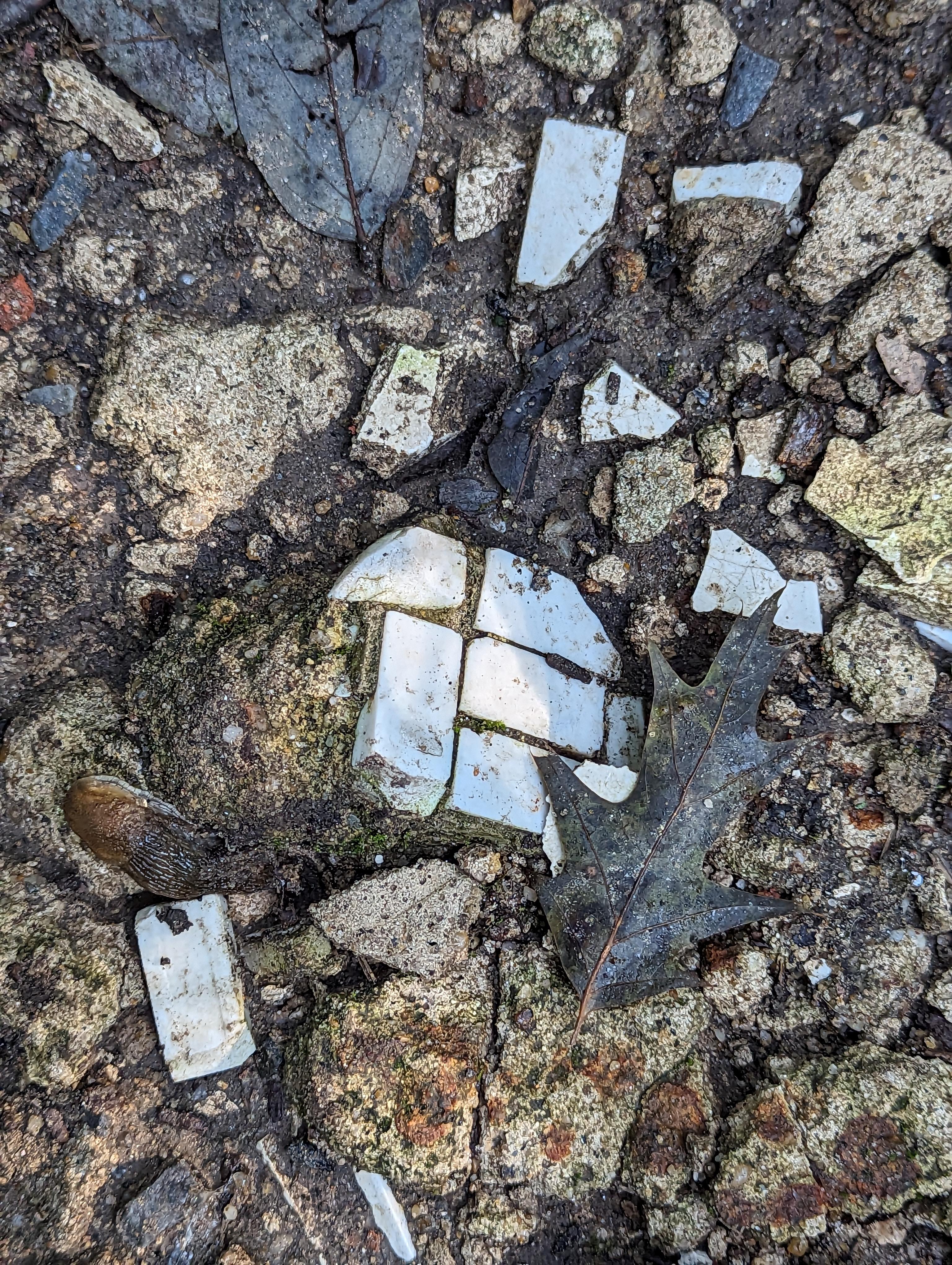
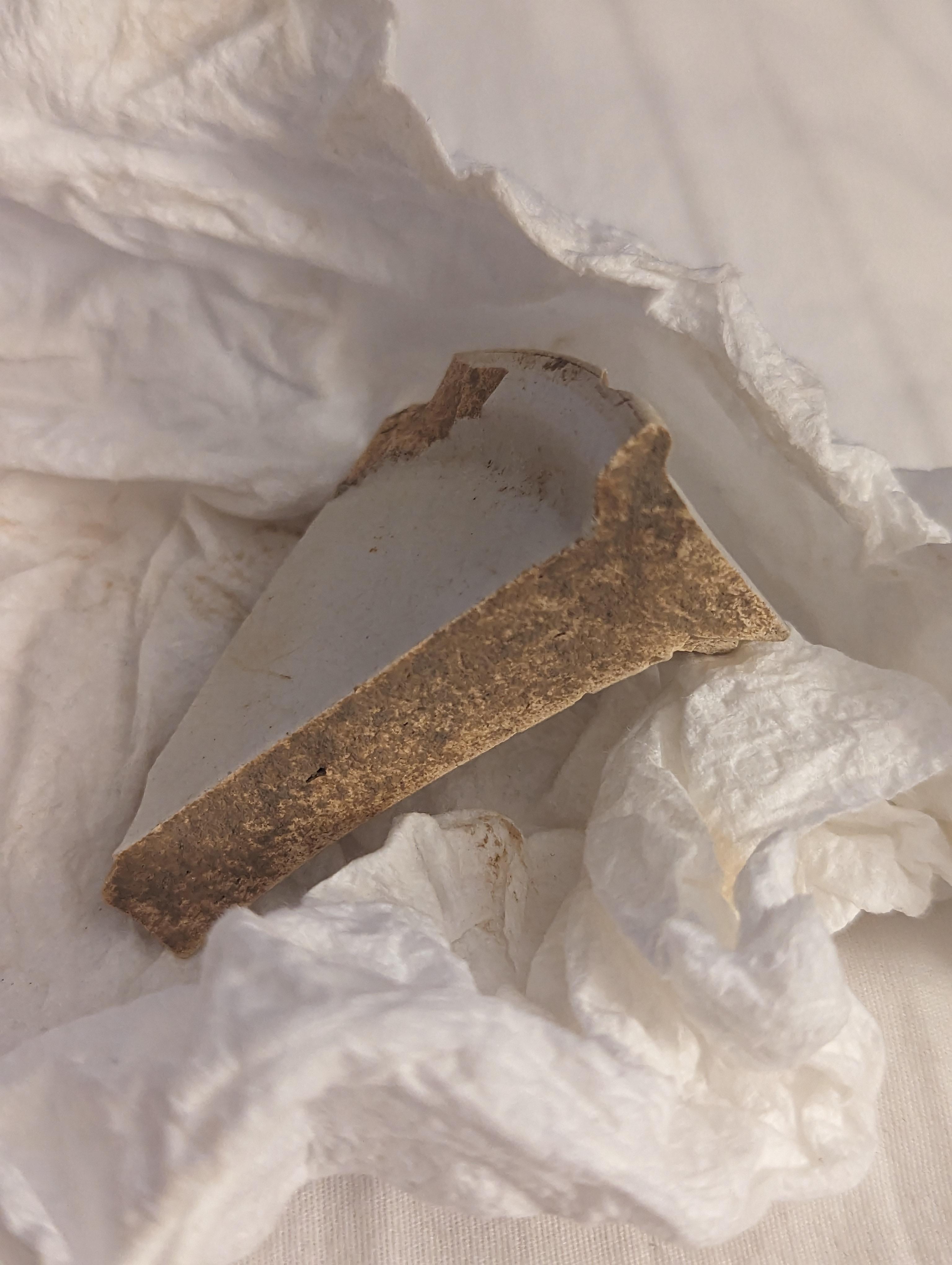 July 21, 2023 at 9:46 am in reply to: Proposed 34,000 seat Cricket stadium for VC Park Parade Grounds #3544
July 21, 2023 at 9:46 am in reply to: Proposed 34,000 seat Cricket stadium for VC Park Parade Grounds #3544No Anita, you are not wrong. It was definitely a tone deaf response from the Board. Bob Fanuzzi was not there, which was unfortunate. He is the Chair of the Environment and Sanitation Committee
<p style=”text-align: right;”>https://cbbronx.cityofnewyork.us/cb8/committees/environment-sanitation/</p>July 21, 2023 at 7:07 am in reply to: Proposed 34,000 seat Cricket stadium for VC Park Parade Grounds #3542I can’t imagine that this construction and installation won’t have a detrimental effect on both the Van Cortlandt House Museum and the Enslaved Persons Burial Ground and the Nature Center, in terms of visitors. Also might this construction have any effect on the physical integrity of the museum structure? I’m not an engineer but there will have to be some pretty serious concrete pylons installed to support a stadium of this magnitude.
This park is also adjacent to wooded area, the wetlands and the Putnam trail which I imagine visitors will not be as motivated to visit with the noise, vibration and general construction site disruption. On so many levels this is a train wreck for the ecological and socio-cultural-historical health of the Park.
Jillian, there were a couple of inaccuracies in the presentation.
1) Yes, the property was bought “as of right”, but the permits oy allowed for interior demolition. The paperwork filed by the developers also evidenced the presence of asbestos. So when the roof started coming off, and the community and CB8 alerted the DOB, DOB sat on their hands for 11 weeks until the damage was done.
2) When I reviewed the paperwork for the latest request for landmarking, nothing stated that VRB was in bad shape, too bad for landmarking. The damage preventing landmarking appears to be done during the this rogue roof demolition period. I don’t know who CUNY spoke to at Landmarks, someone who wouldn’t identify themselves by name, but I never heard that VRB was so bad off it couldn’t be landmarked, at least not until it was destroyed by the contractor.
I had always heard that the family owning VRB had been approached to landmark but rejected the idea because it would constrain them.
Another thing that is dead wrong is the claim that neighbors complaints shut down the construction. It’s partly true that sustained community complaints forced DOB to pull their paperwork and that’s what shut it down. Three full SWOs public and worker hazards and roof demolition in the presence of asbestos. The show states that there was an asbestos survey during the SWOs. Tests had to be done to determine the release and presence of asbestos outside the house as the result of the demolition. But the presence of asbestos was known by DOB on Day 1.
So there was no “loophole” per se. Just a whole lot of enabling on the part of a public agency who’s mission in part is to police construction and protect people from violations. Not so much.
Although there are a few factual errors in the section on Villa Rosa Bonheur, it’s otherwise a great episode. It’s respectful of the community, appreciating the commitment of local people and Groups to the specialness of the place we call home.
That’s my favorite part.
March 5, 2023 at 7:07 pm in reply to: SOLVE THE MYSTERY OF BOOKER T. WASHINGTON AT CHURCH OF THE MEDIATOR #3301The date has been changed to March 31.
-
AuthorPosts